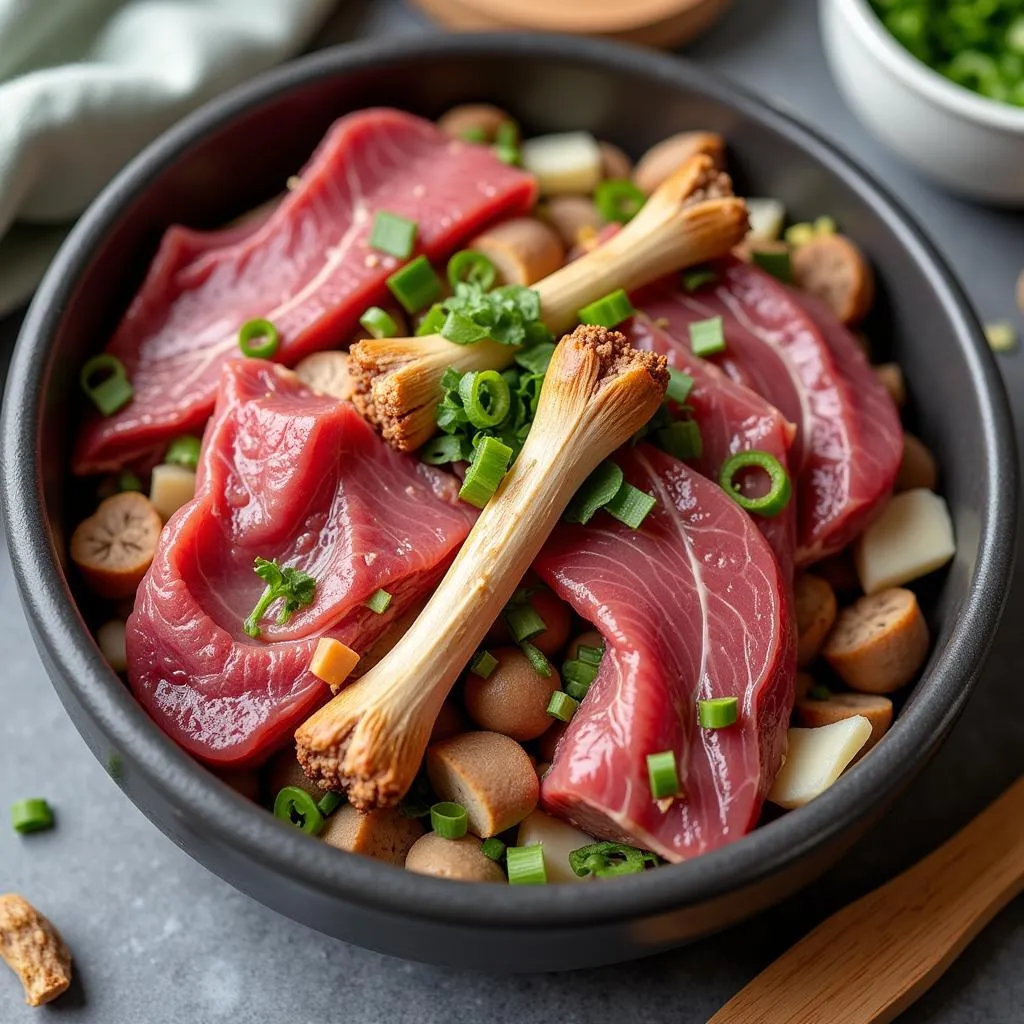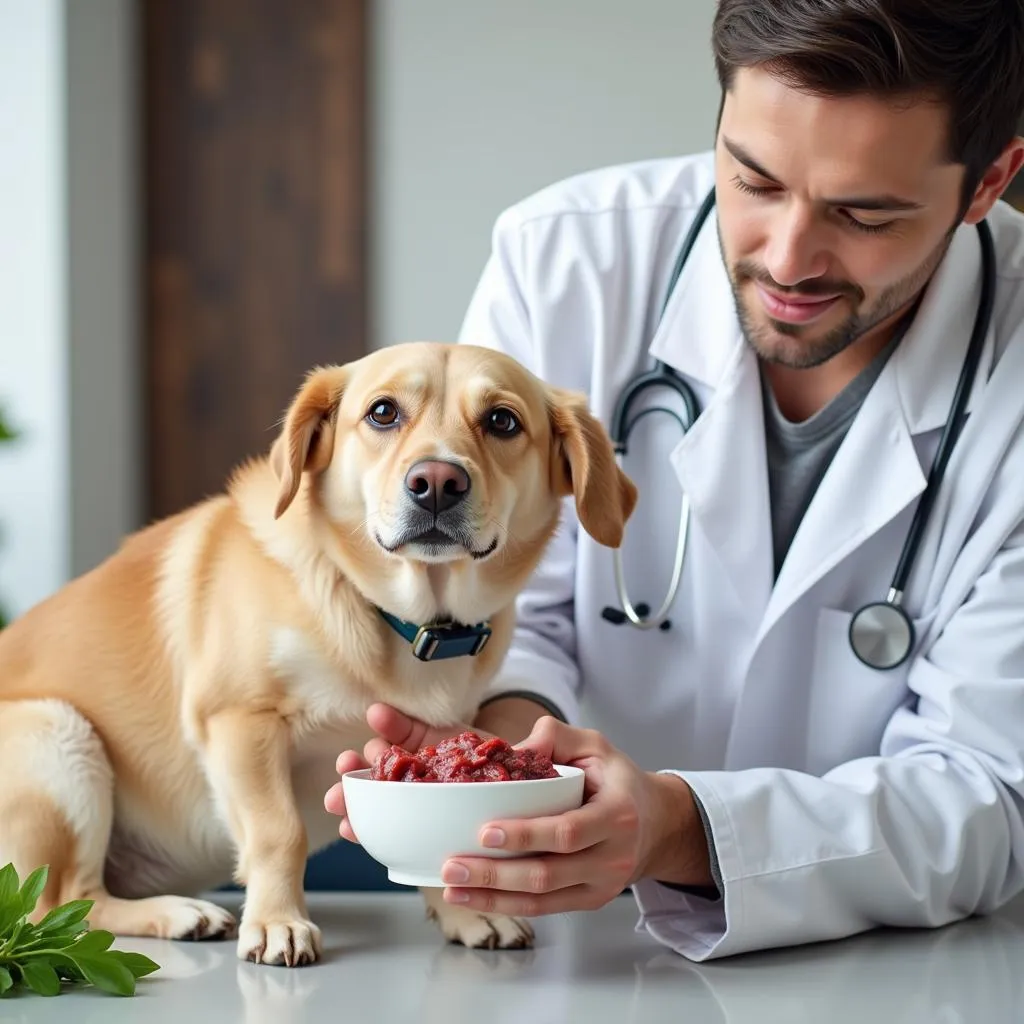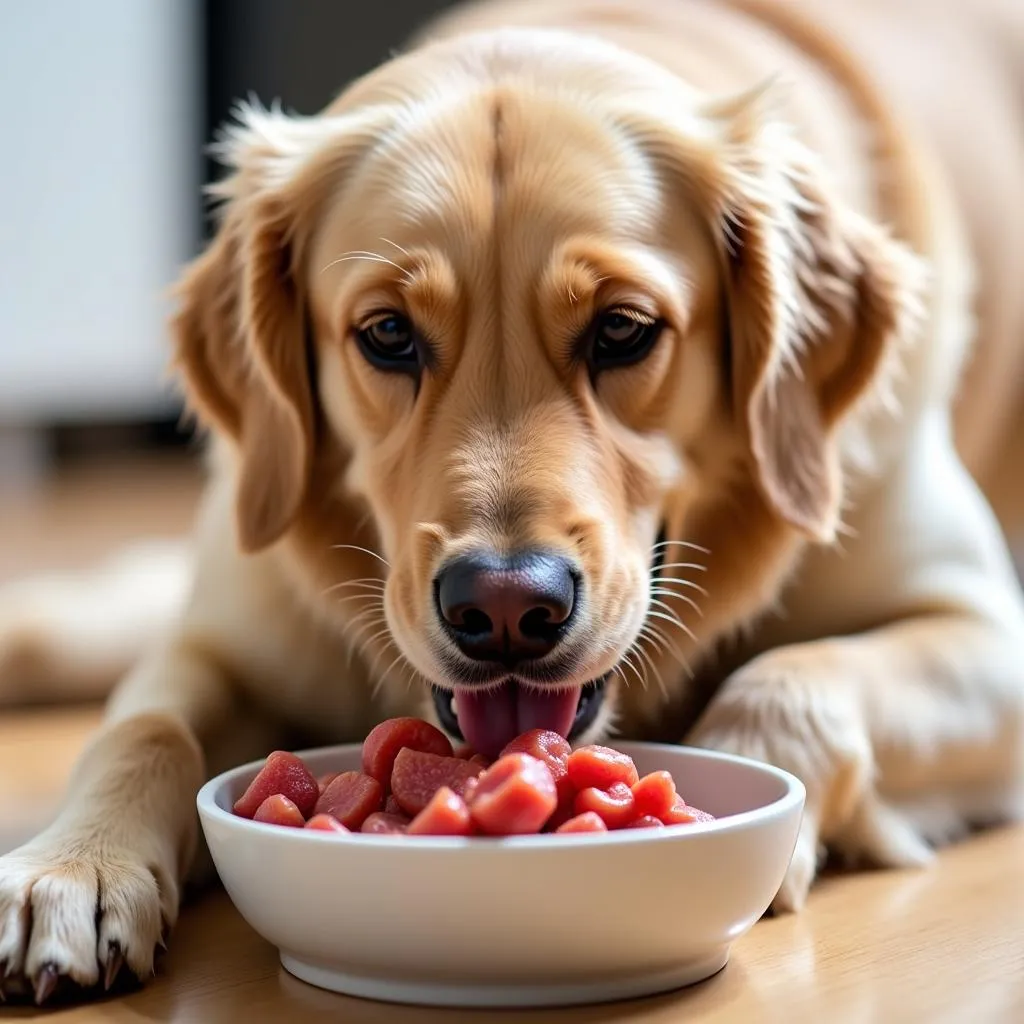Raw dog food diets have surged in popularity, promising numerous health benefits for your furry companions. But with so much information available, it’s easy to feel overwhelmed. This comprehensive guide provides answers to your questions about raw dog food, covering its benefits, risks, and how to safely transition your canine to this dietary approach.
 Balanced Raw Dog Food Ingredients
Balanced Raw Dog Food Ingredients
What is Raw Dog Food?
Raw dog food, often referred to as the “biologically appropriate raw food” (BARF) diet, consists of uncooked ingredients like muscle meat, bones, organs, fruits, and vegetables. This approach mimics the diet of dogs’ wild ancestors, aiming to provide them with natural nutrients in their most bioavailable form.
Benefits of a Raw Dog Food Diet
Advocates of raw dog food highlight several potential benefits:
- Improved Digestion: Raw food contains natural enzymes that aid digestion and nutrient absorption.
- Shinier Coat and Healthier Skin: Essential fatty acids in raw ingredients contribute to a glossy coat and reduce skin issues.
- Increased Energy Levels: A nutrient-rich raw diet can provide sustained energy throughout the day.
- Dental Health: Chewing raw meaty bones helps clean teeth and reduce plaque buildup.
- Reduced Allergies: Some dogs experience fewer allergies when switched to a raw diet, as it eliminates common allergens found in processed foods.
Risks of Feeding Raw Dog Food
While raw feeding offers potential benefits, it’s crucial to be aware of the risks:
- Bacterial Contamination: Raw meat can harbor harmful bacteria like Salmonella and E. coli, posing a risk to both dogs and humans.
- Nutritional Deficiencies: Improperly balanced homemade raw diets can lead to nutritional imbalances, impacting your dog’s health.
- Choking Hazards: Bones, especially cooked ones, can splinter and cause choking or internal injuries.
Transitioning to Raw Dog Food
Transitioning your dog to a raw diet should be done gradually over 7-10 days to minimize digestive upset:
- Start with a Small Amount: Introduce a small portion of raw food alongside your dog’s current food.
- Gradually Increase the Ratio: Slowly increase the amount of raw food while decreasing the old food each day.
- Monitor Your Dog Closely: Observe your dog for any signs of digestive issues, such as vomiting or diarrhea.
 Veterinarian Examining Dog Before Raw Food Diet
Veterinarian Examining Dog Before Raw Food Diet
How to Choose the Right Raw Dog Food
Selecting the right raw food option for your dog is crucial. You can choose from:
- Commercially Prepared Raw Food: Available in frozen or freeze-dried forms, these pre-made options offer convenience and balanced nutrition.
- Homemade Raw Food: Requires careful planning and recipe formulation to ensure nutritional completeness. Consult with a veterinary nutritionist for guidance.
Tips for Safe Raw Feeding
Follow these tips to ensure safe raw feeding practices:
- Source High-Quality Ingredients: Choose human-grade meat, poultry, and organs from reputable sources.
- Practice Proper Hygiene: Thoroughly wash your hands, surfaces, and utensils after handling raw meat.
- Store Raw Food Properly: Keep raw food frozen until ready to use and thaw it in the refrigerator.
- Avoid Feeding Cooked Bones: Cooked bones are brittle and can splinter, posing a choking risk.
Answers to Frequently Asked Questions about Raw Dog Food
1. Is raw food safe for puppies and senior dogs?
Yes, but their nutritional needs differ. Consult with your veterinarian for appropriate feeding guidelines.
2. Can I feed my dog raw bones?
Yes, raw meaty bones are a natural and beneficial part of a raw diet. However, avoid cooked bones as they can splinter.
3. How much raw food should I feed my dog?
The amount varies depending on your dog’s age, breed, activity level, and the type of raw food you choose. Refer to feeding guidelines on the packaging or consult with your vet.
4. Is raw food more expensive than kibble?
Generally, yes, raw feeding can be more expensive than kibble due to the higher cost of ingredients.
5. Can I mix raw food with kibble?
While not ideal, mixing can be done occasionally. However, it’s best to feed raw and kibble meals separately for optimal digestion.
 Happy Dog Enjoying Raw Food Meal
Happy Dog Enjoying Raw Food Meal
Conclusion
Switching your dog to a raw food diet requires careful consideration and research. While it offers potential benefits, it’s essential to be aware of the risks and take necessary precautions. Always consult with your veterinarian before making any significant dietary changes for your furry friend. Remember, providing a balanced and nutritious diet is crucial for your dog’s overall health and well-being.
If you need any help choosing the right raw food options for your beloved pet, don’t hesitate to contact us at Phone Number: 02437655121, Email: [email protected]. Or visit us at 3PGH+8R9, ĐT70A, thôn Trung, Bắc Từ Liêm, Hà Nội, Việt Nam. Our dedicated customer service team is available 24/7 to assist you.